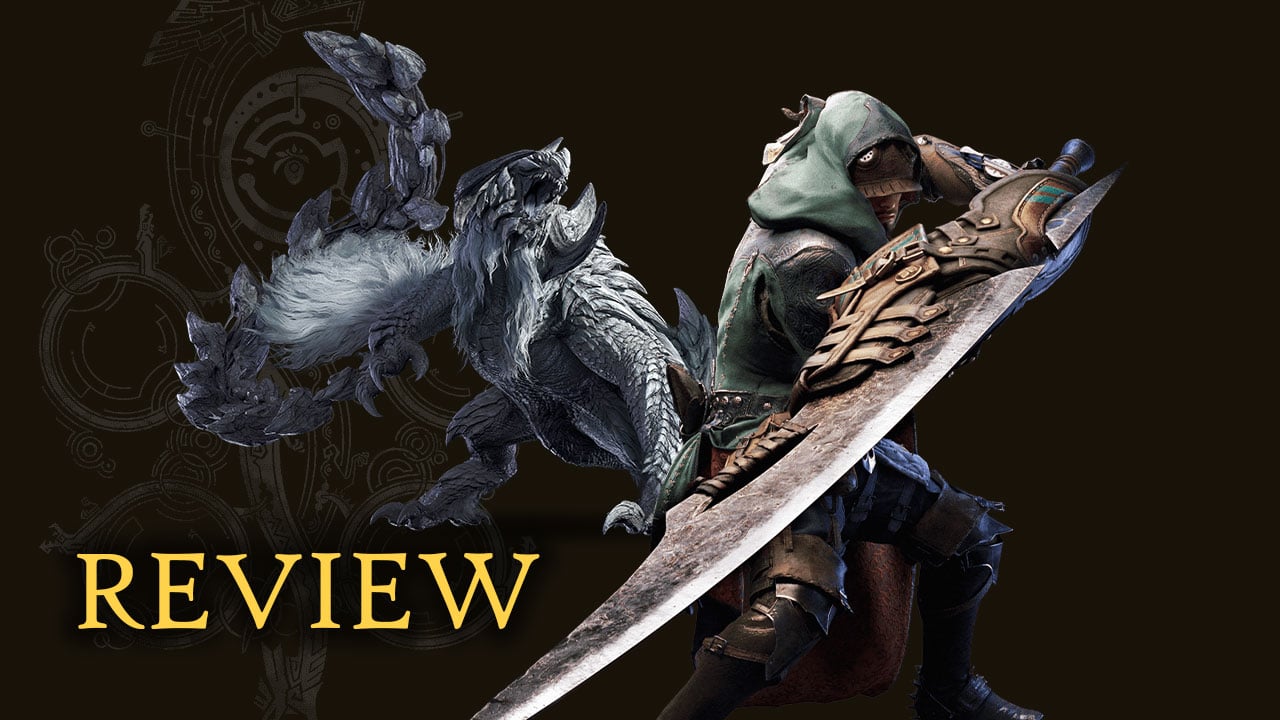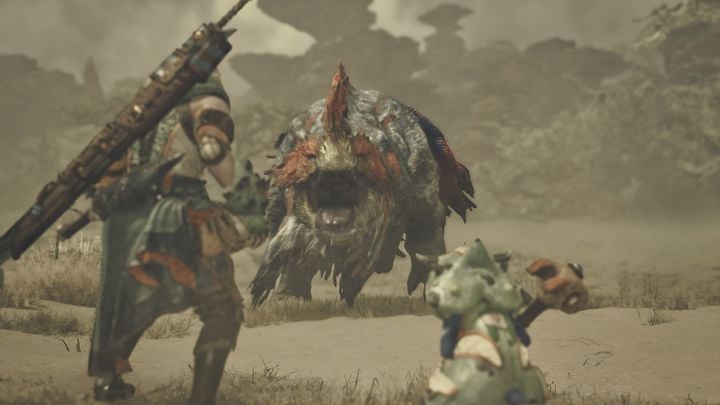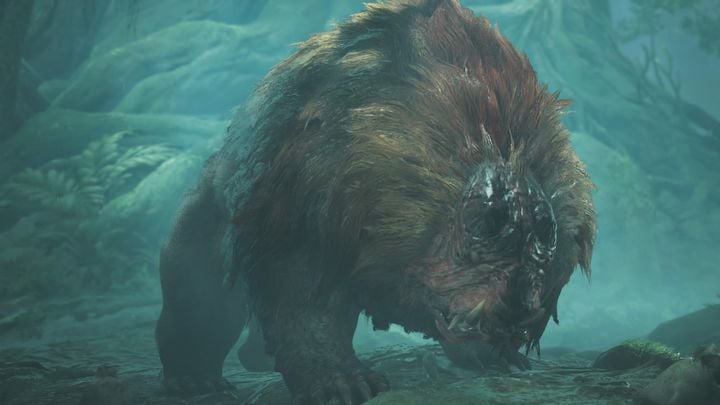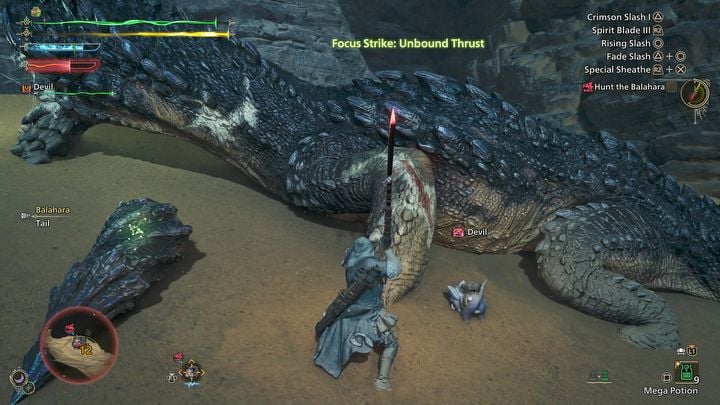
The Monster Hunter series has maintained a consistent concept: you play as a hunter pursuing diverse, dangerous beasts. Since its inception in 2004 by Capcom on PlayStation 2, the core gameplay hasn’t undergone significant transformation. However, despite the lack of compelling characters or narratives, this series has remained popular among gamers due to the adrenaline rush of tracking down a new monster and crafting weapons or armor pieces from their obtained materials. The challenging gameplay has retained interest for more than two decades, eventually gaining wider acclaim. The release that truly boosted its popularity was Monster Hunter World, which sold over 20 million copies and was seen as a groundbreaking title in the franchise. With the first trailers, Monster Hunter Stories (Wilds) appeared to be another evolution for the series. While there are some elements of progress, I’m not convinced that all these changes were essential.
Welcome to the Forbidden Lands
During the open beta trials for Monster Hunter Wilds, some players raised issues about its graphics and overall quality. The textures appeared blurry and lacked clarity. However, the final edition of the game looks improved and runs at a steady frame rate. While playing it in performance mode, I noticed that the game seemed less appealing compared to Monster Hunter World released in 2018 on PlayStation 4 and Xbox One due to its demand for precise timing. Switching to quality mode enhances the visuals but reduces the frame rate to 30 frames per second on the standard PlayStation 5, which can be less optimal for a game that relies heavily on quick reactions, where every frame matters.
What stands out are the weather effects, particularly during intense storms – seeing lightning strike the ground and observing the sky flash. These effects significantly bolster the authenticity of the weather system. Another noteworthy aspect is how the monsters’ bodies respond to our attacks. They now feature animations that make them jiggle and tremble after being struck, adding a sense of realism to the creatures.
Mission briefing
In Monster Hunter Wilds, veterans will notice a fresh addition: your character is now voiced, engaging in conversations and cut-scenes rather than just nodding. Previously silent, they are now actively partaking in discussions. Unfortunately, the feature where characters speak in the unique Monster Hunter language has been removed. This was an endearing aspect that added to the series’ appeal. However, you can make your Palico meow instead of speaking human dialogue, which is a fun alternative!

Following the initial cinematic sequence, you rescue a youth named Nata. This lad introduces himself as belonging to the Keeper tribe and warns you about a creature known as the White Wraith. Fellow members of your expedition, including your character, choose to aid Nata in his journey homeward. It’s evident that this installment of Monster Hunter, specifically Wilds, is placing more emphasis on story development compared to previous games. Previously, the narrative served only as a backdrop for players to hunt new monsters and explore diverse lands. However, in Wilds, there’s a noticeable increase in cut-scenes and dialogue-heavy scenes between characters.
Having a narrative structure isn’t necessarily a negative aspect, but I must admit that concentrating too much on storytelling rather than allowing players to hunt freely wasn’t the most effective choice. Occasionally, quests can last up to a dozen minutes, yet there are instances where half of the player’s time is consumed by listening to dialogues and watching scenes. Even though well-directed cut-scenes, particularly those showcasing different monsters, are engaging, it still reduces our active involvement to that of an onlooker. This emphasis on cinematic elements has some impact in the endgame, but to truly appreciate it, you’ll need to invest time in completing the story.
- refined combat system with small and big tweaks;
- fun new monsters;
- endgame is the best this game has to offer.
CONS:
- story sequences can drag for too long;
- difficulty may seem too low for veterans of the series.
Running in the wild
The essence of the Monster Hunter series revolves around its gameplay mechanics. Selecting an appropriate weapon from among 14 types and embarking on a hunt follows naturally. Once you’ve defeated your target monster, you gather materials by carving it, then return to the base to work with a smith or shopkeeper, possibly crafting new armor parts or upgrading your weapon. This cycle has proven timeless for over two decades. However, Wilds introduces some changes. Gone is the separate hub where you could find shops and smithies; instead, we traverse a single, interconnected map comprised of various biomes. Each biome features a main camp where you can craft new gear components, shop, accept side quests, or even set up temporary camps – tents that allow you to resupply, change your loadout, and so on. These temporary camps require a modest point investment, which you earn by completing hunts or collecting specific items. They can be destroyed by large monsters that discover them, but reestablishing them is not overly challenging.

In the game Wilds, certain locations now function as quick travel spots due to merged maps. Despite being relatively compact, these areas don’t require extensive searching for camp setup sites, thanks to your companion, Seikret – a bird-dinosaur hybrid, who aids in navigation. If you’ve played Monster Hunter Rise, you might notice similarities between Seikret and the game’s Palamutes, both serving as transportation methods and proving incredibly beneficial during hunts. Unlike Palamutes, Seikret doesn’t actively participate in combat, instead waiting for your call to join the fight.
One of the significant differences in Wilds is that players are no longer limited to carrying a single weapon. This change stems from the inclusion of Seikret’s satchel, where you can store a secondary weapon for quick swapping. Having both melee and ranged weapons at your disposal can be quite handy, even though skilled players may not use this feature frequently. However, this dual-weapon option allows for creative builds and hunting strategies.

Cut and smash
In our day-to-day activities, we’re often engaged in battling diverse-sized monsters. To ensure this battle experience is enjoyable, Capcom has meticulously designed the gameplay mechanics. For instance, the character movements feel smooth and fluid, which is crucial in a combat-focused game like this. The fourteen weapons have been updated with new moves and modifications to their move sets, keeping the gaming experience engaging even for seasoned Monster Hunter players.
Another significant addition is the Focused Mode, which allows us to precisely aim our weapon and concentrate on attacking specific parts of the monster. This can be particularly beneficial with slow-swinging weapons like the Greatsword, as it reduces the risk of being counter-attacked during a swing. In this mode, we can also spot wounds on the monster’s body, which are areas that have taken sufficient damage. We can use a Focused Strike to deal massive damage to these specific parts, making the attack more effective. Alternatively, regular attacks can be used to destroy these wounds, but this process takes longer than performing a Focused Strike. An advantage of destroying these wounds is that we receive additional monster materials from them, reducing the need for players to hunt the same monster repeatedly to gather specific materials needed for equipment upgrades.
When discussing the topic of gear, one point often raised about Monster Hunter World was that the weapons lacked visual intrigue compared to their predecessors. In contrast, Wilds avoids this issue by ensuring each weapon family stands out uniquely, with no similar-looking weapons among monsters save for minor differences like a distinctive tuft of hair near the blade. Although it may seem that fourteen weapons is already plenty, introducing a new type of weapon could potentially enrich this extensive collection even further. Since the last addition to our hunting tools was in Monster Hunter 4, which was released in 2013, Wilds presented an ideal chance for us to enjoy one or two freshly designed weapons.

In our game, we employ a variety of equipment to pursue an array of fascinating creatures, some of which were previously showcased during beta trials. To keep the excitement high, I’ll be cautious about revealing too much detail, allowing players the joy of discovery and combat. I’m confident that several of these new creatures will endure in the series for a longer period. I certainly hope so, as encounters with beasts like Rey Dau were thrilling due to their unique sounds, attacks, and movements.
Upon finishing the game, I realized there weren’t many monsters overall, but that might change post-release, given that Capcom has introduced new creatures in updates for both “World” and “Rise”. It’s reasonable to expect they will do the same for “Wilds.”
A recurring thought while playing was that for most of my gaming time, I didn’t encounter significant issues when defeating monsters. However, this changes in the endgame, although even then, I rarely had to retreat from a fight and I’m relatively new to the Monster Hunter series.
Mission complete
As a dedicated fan, I must admit that Monster Hunter Worlds isn’t perfect – some story segments can feel drawn out, there seem to be fewer monsters to hunt, and the graphics aren’t quite as stunning as in previous versions. However, the new monsters are an absolute joy to encounter and battle, and the introduction of Focus Mode and improved weapon mechanics significantly enhance the combat system. This makes Monster Hunter Worlds a fantastic game for both beginners and seasoned players alike, offering a fresh and engaging experience.
Read More
- Invincible’s Strongest Female Characters
- Top 8 Weapon Enchantments in Oblivion Remastered, Ranked
- MHA’s Back: Horikoshi Drops New Chapter in ‘Ultra Age’ Fanbook – See What’s Inside!
- Nine Sols: 6 Best Jin Farming Methods
- Fix Oblivion Remastered Crashing & GPU Fatal Errors with These Simple Tricks!
- Top 8 UFC 5 Perks Every Fighter Should Use
- How to Reach 80,000M in Dead Rails
- Gold Rate Forecast
- USD ILS PREDICTION
- Master Conjuration Spells in Oblivion Remastered: Your Ultimate Guide
2025-02-24 18:32